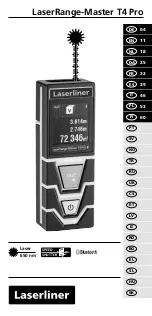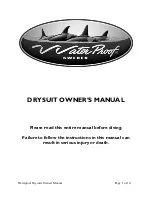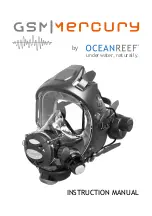
stewmac.com
Press in the saddle; no glue is needed .
There are two options for attaching the strings to the
bridge—one is a simple knot in one end of each string . Pull
it tight and trim the excess .
The other option is to
string the bridge like a
classical guitar . Thread the
end of the string through the
holes on the saddle side, pull it
through, and continue the
knot as pictured .
Thread the other end of the string
through the hole of a tuner and tighten
the string . Leave three or four complete
wraps around the tuning post .
Install the strings and tune
1st = A = thinnest
2nd = E = next fattest
3rd = C = fattest (wound)
4th = G = next thinnest
1st = A
4th = G
2nd = E
3rd = C
The height of the strings over the frets is called the action .
This height of the strings is controlled by the nut and saddle .
The string action at the first fret should be .015" and the
string action at the 12th fret should be .090" .
For example, the distance from the G string and the first fret
should be .015" . If you don’t have nut-slotting saws, you can
adjust this slot with a fine-tooth hacksaw blade . Check the
height of the string at the 12th fret: this should be .090" . To
adjust this height, sand material off the bottom of the saddle .
Only the nut adjustment will be needed for the other strings .
That’s it! You’ve built a ukulele, and you’re ready to play!
Set the string action
The pocket size String Action Gauge (#0670
available from StewMac) is used here to read
the string action—the top photo is at the
first fret, and the bottom is at the 12th.
The strings provided are for standard ukulele tuning:
G C E A (from left to right when you are facing the instru-
ment) . Tighten with just enough tension to take the slack
out as it settles into the nut slot .
Tighten the strings until they are in tune . (To remember the
G C E A order: “Great Care Ensures Accuracy .” If you’ve ever
heard someone tuning and singing a melody to “My Dog
Has Fleas,” that’s ukulele tuning .) Expect to have to retune
frequently until new strings have had some time to settle in .
16
Summary of Contents for 5348
Page 1: ...Tenor Ukulele Kit 5348 Assembly Instructions www stewmac com ...
Page 11: ......
Page 13: ...Back brace 8 15 16 from neck end Body length 12 Bridge plate 8 9 16 from neck end ...
Page 14: ......
Page 23: ......



































